When your contact center handles thousands of calls a day over VoIP, guessing what’s working isn’t enough. You need hard numbers-real-time, accurate, and tied directly to what customers feel and what your bottom line depends on. The three metrics that matter most are AHT, FCR, and CSAT. They’re not just buzzwords. They’re the backbone of every high-performing VoIP contact center today.
What AHT Really Tells You (And What It Doesn’t)
Average Handle Time (AHT) measures how long an agent spends on each call: talk time, hold time, and after-call work. It’s the go-to metric for efficiency. But here’s the trap: if you push agents to cut AHT without thinking about the rest, you’ll break something else.
Financial services centers average 4.2 minutes per call. Technical support? Around 6.8 minutes. Why the gap? Complex issues take time. A call that ends in 2 minutes because the agent couldn’t fix the problem? That’s not efficiency-that’s a repeat call waiting to happen.
One healthcare provider slashed AHT from 5.2 to 3.8 minutes by pressuring agents to rush. FCR dropped 16 points. Customer complaints spiked. They had to undo the change. The lesson? AHT is a tool, not a target. It should help you spot bottlenecks-not punish agents for taking the time to solve problems.
Modern VoIP platforms calculate AHT within 200 milliseconds of call end. That means you can spot spikes in real time. Is AHT rising on after-hours shifts? Maybe agents are struggling with a new system. Is it dropping during training weeks? That’s a sign the training’s working. Use AHT to diagnose, not to dictate.
FCR: The Silent Driver of Loyalty and Cost Savings
First Call Resolution (FCR) is the percentage of customer issues solved on the first contact. It sounds simple. But its impact isn’t. GetVoIP found that a 1% increase in FCR leads to a 1.1% boost in customer retention. That’s not a correlation-it’s a cause-and-effect chain.
Every time a customer has to call back, you pay for it. More talk time. More hold time. More after-call work. That’s $4.20 extra per unresolved issue, according to the same data. And the customer? They’re frustrated. They’re less likely to stick around.
Top-performing centers hit FCR rates above 80%. How? They don’t just track it-they act on it. MediCare Solutions used speech analytics to find 17 recurring knowledge gaps. Agents didn’t know how to answer common questions about insurance codes. Once they fixed those gaps, FCR jumped from 68% to 83% in six months. CSAT rose 29 points.
AI is making FCR smarter. Gartner reports that platforms now predict FCR likelihood based on the first 30 seconds of a call. If the system detects a customer asking about billing errors, it can route them to an agent with a history of resolving those issues-boosting FCR by 14% on average.
But FCR only works if your agents have the tools. If they’re jumping between five systems to find an answer, resolution time grows. If your knowledge base is outdated, they’ll guess. FCR isn’t about speed. It’s about accuracy-and the systems that support it.
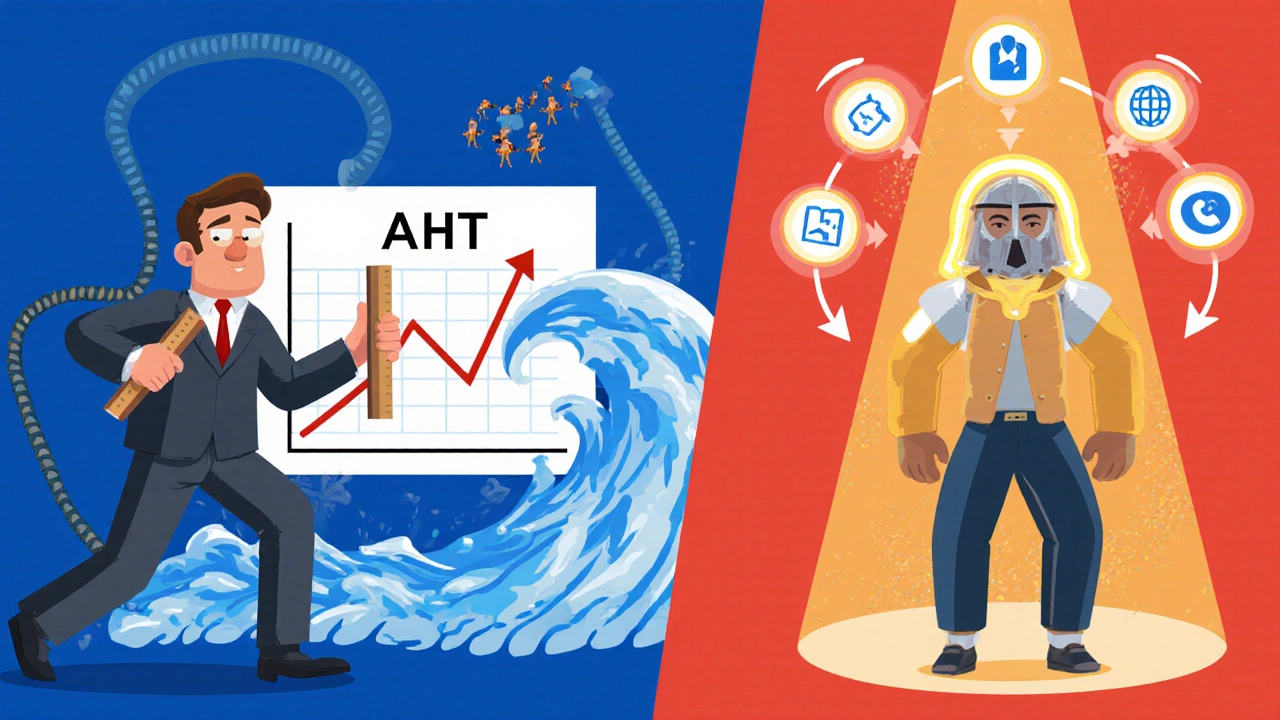
CSAT: Listening to Customers, Not Just Counting Ratings
Customer Satisfaction Score (CSAT) is simple: after a call, ask the customer to rate their experience-usually on a scale of 1 to 5. You then calculate the percentage of satisfied responses (4 and 5).
Good CSAT scores? 75% to 85%. Banking hits 79%. Retail? Only 72%. Why the difference? Retail customers expect fast, frictionless service. Banking customers expect accuracy and trust. If you treat them the same, you’ll fail both.
But here’s the catch: CSAT surveys only work if people respond. On G2, contact center managers say survey fatigue kicks in when response rates drop below 25%. That means your score is based on a tiny, biased slice of your customers. The ones who are angry or thrilled respond. The ones who are okay? They ignore it.
Solutions? Shorten the survey. Ask one question: “How satisfied were you with your experience today?” Add a follow-up: “What’s one thing we could improve?” Make it take 10 seconds. Use in-call prompts with VoIP systems that trigger surveys only after calls flagged as high effort.
And don’t just look at the number. Read the comments. One IT manager saw CSAT drop from 82% to 67% after enforcing a 4-minute AHT rule. The comments said the same thing: “Agent rushed me,” “Didn’t listen,” “Had to call back.” The numbers told a story. The comments told the truth.
The Balance: Why You Can’t Optimize One Metric Alone
Here’s the hard truth: you can’t maximize AHT, FCR, and CSAT at the same time-if you treat them like separate targets.
ICMI’s 2023 report shows top centers keep AHT between 4 and 6 minutes, FCR above 80%, and CSAT above 85%. That’s not luck. It’s strategy.
When agents are pressured to reduce AHT, they cut corners. They skip steps. They don’t ask clarifying questions. FCR falls. CSAT crashes. Then you get repeat calls-and AHT goes back up. It’s a loop.
Sheila McGibbon from DMG Consulting put it bluntly: “Every minute shaved from handle time without regard to FCR results in 3.2 additional contacts per dissatisfied customer.” That’s not saving money. That’s creating more work.
The fix? Use all three metrics together. Build a balanced scorecard. Track them weekly. If AHT drops but FCR and CSAT fall too, you’ve got a problem. If FCR rises and CSAT stays high, even if AHT ticks up slightly? That’s progress.
Genesys Predictive Routing 3.0 does this automatically. It looks at an agent’s historical FCR and CSAT scores, plus current AHT, and routes calls to the best match-not the fastest. Result? AHT drops 18%, FCR stays at 83%. That’s the ideal.

How to Get Started: Tools, Integration, and Skills
You don’t need a $500,000 system to start. But you do need integration. Your VoIP platform (like Amazon Connect, Webex, or Five9) must talk to your CRM, your quality monitoring tool, and your survey system.
Most platforms offer pre-built connectors. Amazon Connect cuts setup time by 35%. Salesforce Einstein reduces metric discrepancies across voice, chat, and email by 82%. Start there.
Implementation takes 6 to 8 weeks for basic setups. Enterprise deployments? 14 to 18 weeks. Why so long? Data silos. Sixty-eight percent of centers struggle with inconsistent metrics across channels. A call handled in chat might count as “resolved” differently than one handled on the phone. Standardize your definitions. Use ICMI’s guidelines. Don’t let vendors define FCR for you.
Skills you need? SQL for custom reports (74% of centers use it). Basic stats to spot trends (58%). And understanding of SIP and WebRTC protocols (63%) so you can troubleshoot data delays. You don’t need to code-but you need to know what the data says when it breaks.
The Future: AI, Predictions, and Avoiding the Trap
The next wave? Predictive analytics. By 2026, Gartner predicts 75% of contact centers will use AI to forecast FCR before the call even starts. If the system sees a customer has called three times in a month, it can flag them for a supervisor. If the agent’s tone sounds rushed, it can nudge them to slow down.
But AI won’t fix bad incentives. A 2024 Contact Center World survey found 43% of agents feel pressure to manipulate metrics. They end calls early. They avoid complex cases. They push customers to survey tools they know will give high scores.
The answer? Transparency. Show agents how their AHT, FCR, and CSAT numbers affect the team. Celebrate wins where all three move together. Reward problem-solving, not speed. And never, ever tie bonuses to AHT alone.
The market is growing fast. VoIP analytics hit $3.2 billion in 2024. Eighty-seven percent of enterprises track CSAT. But only 13% are using these metrics the right way.
It’s not about having more data. It’s about using it to understand people. The customer. The agent. The business.
Get the balance right, and you won’t just improve metrics. You’ll build loyalty. Reduce churn. And make your contact center a real competitive advantage.
What’s a good AHT for a VoIP contact center?
There’s no universal number. AHT varies by industry and call type. Financial services average 4.2 minutes per call, while technical support runs closer to 6.8 minutes. The goal isn’t to hit a number-it’s to keep AHT stable while FCR and CSAT stay high. If your AHT drops but FCR falls, you’re sacrificing quality for speed.
How do I improve First Call Resolution (FCR)?
Start by identifying why calls aren’t being resolved. Use speech analytics to find recurring questions agents can’t answer. Train on those gaps. Give agents one-click access to accurate knowledge bases. Route complex cases to specialists. Top centers use AI to predict FCR likelihood in the first 30 seconds of a call and assign the best agent automatically.
Why is my CSAT score low even though AHT and FCR look good?
CSAT measures how customers feel-not just what happened. A low score with good AHT and FCR often means agents sounded robotic, rushed, or dismissive. Check call recordings. Are agents using the customer’s name? Are they empathetic? Are they solving problems without sounding scripted? CSAT is about emotion, not just efficiency.
Can I use these metrics for outbound sales teams?
Not really. AHT, FCR, and CSAT are built for inbound support, where the goal is to solve a problem. In outbound sales, what matters is conversion rate, call volume, and appointment setting. Using these metrics for sales teams will mislead you. Track different KPIs-like call-to-close ratio or average deal size-instead.
What’s the biggest mistake companies make with VoIP analytics?
Optimizing one metric at the expense of others. Pushing agents to reduce AHT without protecting FCR leads to repeat calls. Focusing only on CSAT without fixing root causes leads to survey fatigue. The mistake is treating metrics as targets instead of diagnostic tools. Use them together. Look for patterns. Ask why numbers change-not just what they are.
How long does it take to implement VoIP analytics?
Basic setups with pre-built integrations take 6 to 8 weeks. Full enterprise deployments across voice, chat, and email can take 14 to 18 weeks. The delay usually comes from data silos-different systems using different definitions for FCR or AHT. Standardize your definitions upfront, and you’ll cut implementation time significantly.


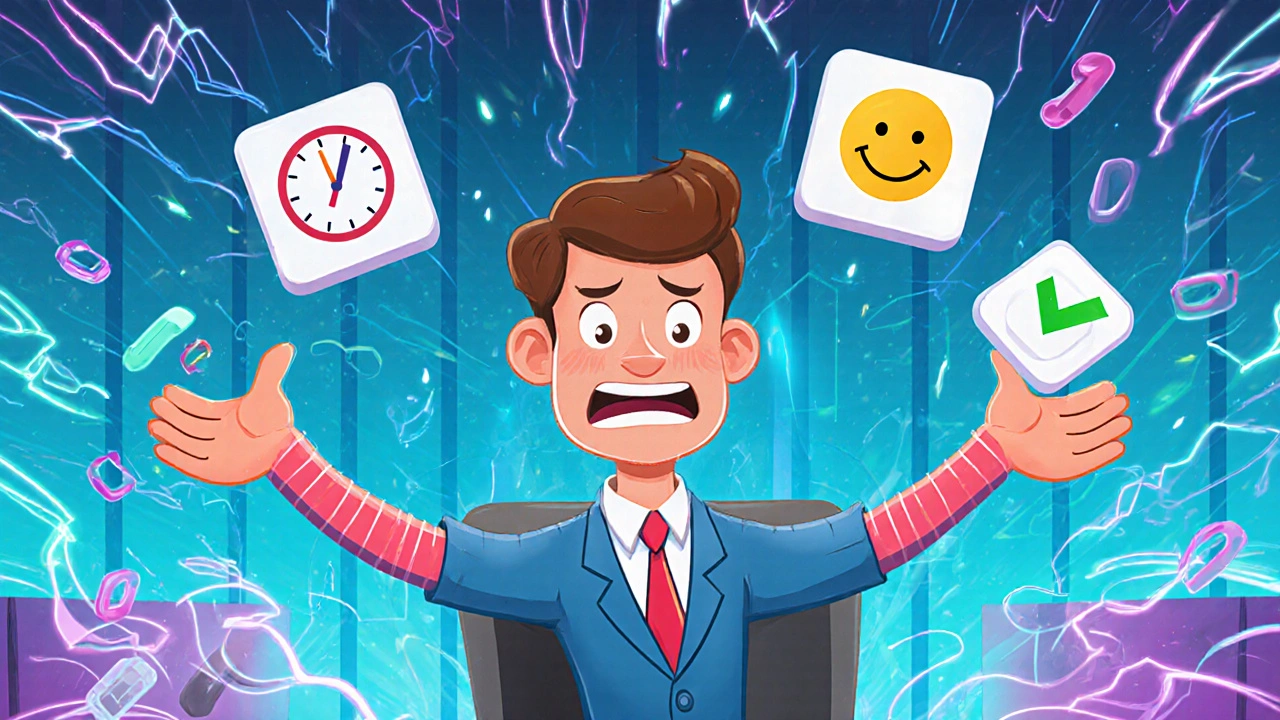

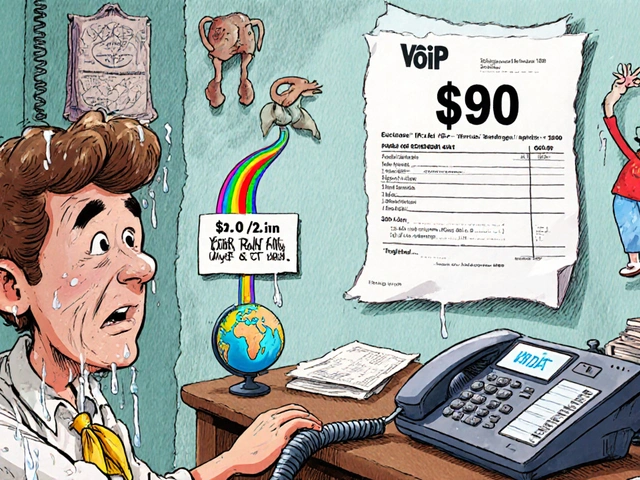


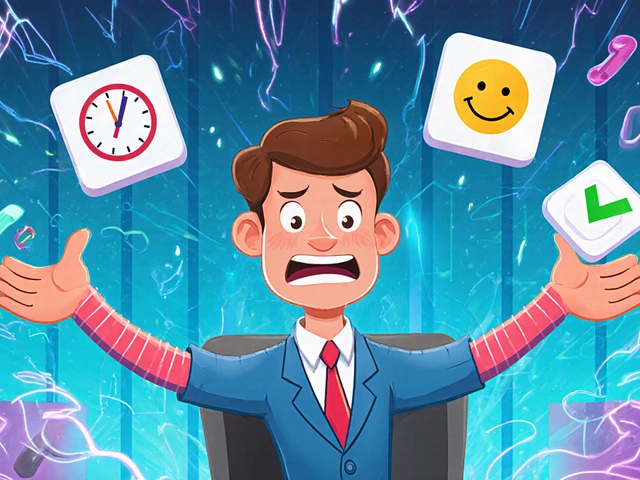

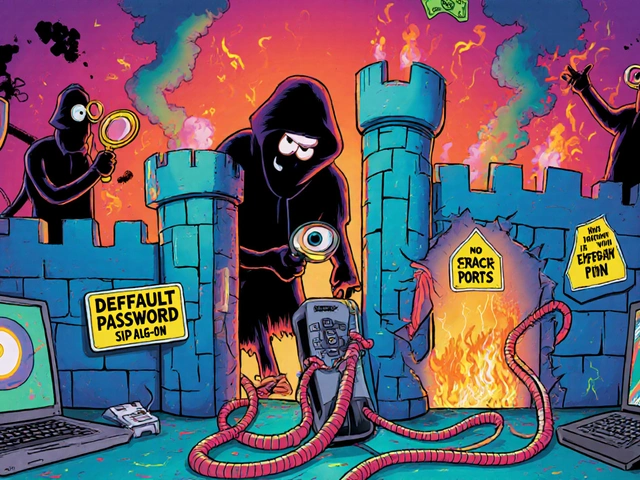
Write a comment